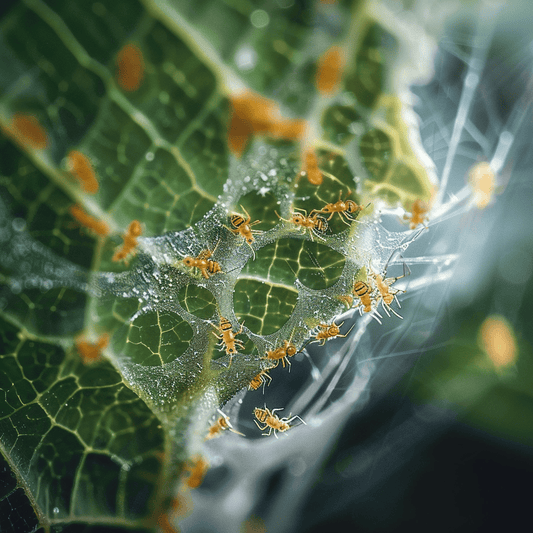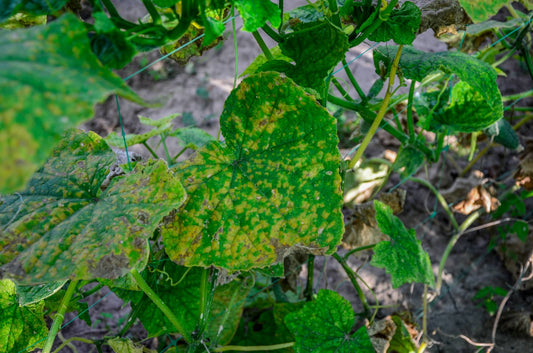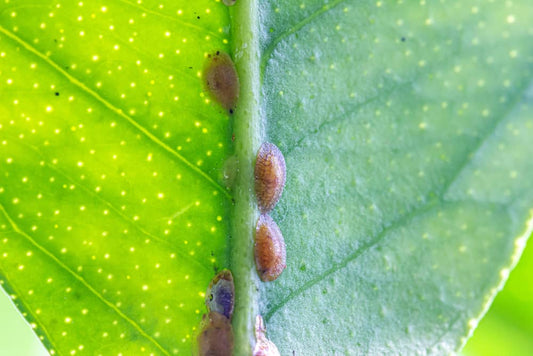Mealybugs, members of the family Pseudococcidae, are small, soft-bodied insects notorious for their destructive habits in hydroponic systems. Covered in a white, powdery wax, they tend to cluster in protected areas of the plants, such as leaf axils, stem joints, and under leaves, making them a hidden menace to a wide range of plants, including ornamentals, fruits, and vegetables.
Identifying Mealybug Infestations
The presence of mealybugs on plants can lead to stunted growth, wilting, and yellowing leaves. A telltale sign of their infestation is the excretion of a sticky substance known as honeydew, which can further lead to the growth of sooty mold on the leaves, compounding the damage and stress on the plant.
Life Cycle Insights
Understanding the complex life cycle of mealybugs, which includes egg, nymph, and adult stages, is crucial for effective management. Females lay eggs in a cottony mass, harboring hundreds of eggs from which nymphs emerge. These nymphs eventually mature into adults, with the entire cycle's duration varying among species and environmental conditions.
Conditions Favoring Mealybugs
Mealybugs thrive in conditions of high humidity and overcrowded plantings, where air circulation is poor. Plants under stress from other factors are also more susceptible to infestation. Being aware of these conditions can help in preventing mealybug infestations before they become a significant problem.
Preventive Measures
To prevent mealybug infestations, maintain optimal plant spacing to reduce humidity and improve air circulation. Regularly inspect plants for early signs of infestation and isolate any that are infested to prevent the spread to healthy plants.
Treatment Strategies
For affected plants, removing and destroying heavily infested parts is a critical first step. Additionally, insecticidal soap or neem oil can be applied as control measures. Introducing natural predators like ladybugs or lacewings into the hydroponic system can also help in managing mealybug populations.
Home Remedies for Mealybug Control
- Insecticidal Soap Spray: A simple yet effective treatment involves mixing 1-2 teaspoons of liquid dish soap with 1 quart of water and spraying the solution directly onto the pests. The soap breaks down the mealybugs' waxy coating, leading to dehydration and death.
- Neem Oil Solution: Mixing 2 teaspoons of neem oil and 1 teaspoon of mild liquid soap with 1 quart of water creates a potent solution that can be applied to affected areas. Neem oil disrupts the life cycle of mealybugs, preventing their growth and reproduction.
Both treatments should be tested on a small area of the plant first to ensure they do not cause harm. Depending on the severity of the infestation, applications may need to be repeated every few days until the mealybugs are eradicated.
Monitoring and Maintenance
Regular checks for signs of mealybugs, especially in warmer months, are essential. Utilizing yellow sticky traps can help monitor and catch flying adults, while keeping the growing area clean and free of plant debris reduces hiding spots and overwintering opportunities for mealybugs.
Implementing these strategies can effectively manage mealybug populations in hydroponic systems, ensuring the health and productivity of the plants. Through diligent prevention, timely treatment, and continuous monitoring, hydroponic gardeners can protect their plants from the damaging effects of mealybugs.




